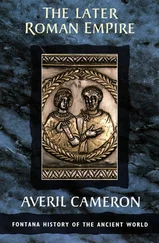Terrot Glover - The Conflict of Religions in the Early Roman Empire
Здесь есть возможность читать онлайн «Terrot Glover - The Conflict of Religions in the Early Roman Empire» — ознакомительный отрывок электронной книги совершенно бесплатно, а после прочтения отрывка купить полную версию. В некоторых случаях можно слушать аудио, скачать через торрент в формате fb2 и присутствует краткое содержание. Жанр: foreign_religion, foreign_antique, foreign_prose, на английском языке. Описание произведения, (предисловие) а так же отзывы посетителей доступны на портале библиотеки ЛибКат.
- Название:The Conflict of Religions in the Early Roman Empire
- Автор:
- Жанр:
- Год:неизвестен
- ISBN:нет данных
- Рейтинг книги:4 / 5. Голосов: 1
-
Избранное:Добавить в избранное
- Отзывы:
-
Ваша оценка:
- 80
- 1
- 2
- 3
- 4
- 5
The Conflict of Religions in the Early Roman Empire: краткое содержание, описание и аннотация
Предлагаем к чтению аннотацию, описание, краткое содержание или предисловие (зависит от того, что написал сам автор книги «The Conflict of Religions in the Early Roman Empire»). Если вы не нашли необходимую информацию о книге — напишите в комментариях, мы постараемся отыскать её.
The Conflict of Religions in the Early Roman Empire — читать онлайн ознакомительный отрывок
Ниже представлен текст книги, разбитый по страницам. Система сохранения места последней прочитанной страницы, позволяет с удобством читать онлайн бесплатно книгу «The Conflict of Religions in the Early Roman Empire», без необходимости каждый раз заново искать на чём Вы остановились. Поставьте закладку, и сможете в любой момент перейти на страницу, на которой закончили чтение.
Интервал:
Закладка:
The invariable features of the worship of Cybele are mentioned here, the eunuch priests, the tambourines, the shouting and leaping and cutting with knives, and the collection of money.[ 72 72 Cf. Strabo, c. 470; Juvenal, vi, 511 f.
] There is no indication of any control being exercised over these priests of Cybele by a central authority, and little bands of them strolled through the Mediterranean lands, making their living by exhibiting themselves and their goddess and gathering petty offerings. They had a bad name and they seem to have deserved it. In the book called The Ass , once ascribed to Lucian, is a short account of such a band. The ass, who is really a man transformed, is the speaker. "The next day they packed up the goddess and set her on my back. Then we drove out of the city and went round the country. When we entered any village, I, the god-bearer (a famous word, theophóretos [ 73 73 See Ramsay, Church in the Roman Empire , p. 397. The Latins used the word divinus in this way – Seneca, de teata vita , 26, 8.
]) stood still, and the crowd of flutists blew like mad, and the others threw off their caps and rolled their heads about, and cut their arms with the swords and each stuck his tongue out beyond his teeth and cut it too, so that in a moment everything was full of fresh blood. And, I, when I saw this for the first time, stood trembling in case the goddess might need an ass' blood too. When they had cut themselves about in this way, they collected from the bystanders obols and drachmas; and one or another would give them figs and cheeses and a jar of wine, and a medimnus of wheat and barley for the ass. So they lived upon these and did service to the goddess who rode on my back."[ 74 74 (Lucian) Asinus, 37. The same tale is amplified in Apuleius' Golden Ass , where the episode of these priests is given with more detail, in the eighth book. Seneca hints that a little blood might make a fair show; see his picture of the same, de beata vita , 26, 8.
]
The Attis of Catullus gives a vivid picture of the frenzy which this worship could excite. Juvenal complains of the bad influence which the priests of Cybele, among others, had upon the minds of Roman ladies. St Augustine long afterwards says that "till yesterday" they were to be seen in the streets of Carthage "with wet hair, whitened face and mincing walk." It is interesting to note in passing that the land which introduced the Mother of the Gods to the Roman world, also gave the name Theotokos (Mother of God) to the church.
Egypt also contributed gods to Rome, who forced themselves upon the state. The Senate forbade them the Capitol and had their statues thrown down, but the people set them up again with violence.[ 75 75 Tertullian, ad Natt. i, 10; Apel. 6. He has the strange fancy that Serapis was originally the Joseph of the book of Genesis, ad Natt. ii, 8.
] Gabinius, the Consul of 58 B.C., stopped the erection of altars to them, but eight years later the Senate had to pass a decree for the destruction of their shrines. No workman dared lay hand to the work, so the consul Paullus stripped off his consular toga, took an axe and dealt the first blow at the doors.[ 76 76 Valerius Maximus, i, 3, 4.
] Another eight years passed, and the Triumvirs, after the death of Cæsar, built a temple to Isis and Serapis to win the goodwill of the masses.[ 77 77 Dio C. xlvii, 15.
] The large foreign and Eastern element in the city populace must be remembered. When Octavian captured Alexandria, he forgave the guilty city "in honour of Serapis," but on his return to Rome he destroyed all the shrines of the god within the city walls. In time Isis laid hold of the month of November, which had otherwise no festivals of importance.
Isis and Serapis
Isis seems to have appealed to women. Tibullus complains of Delia's devotion to her, and her ritual. There were baths and purifications; the worshippers wore linen garments and slept alone. Whole nights were spent sitting in the temple amid the rattling of the sistrum. Morning and evening the votary with flowing hair recited the praises of the goddess.[ 78 78 Tibullus, i, 3, 23 f. Cf. Propertius, ii, 28, 45; Ovid, A.A. iii, 635.
] Isis could make her voice heard on occasion, or her snake of silver would be seen to move its head, and penance was required to avert her anger. She might bid her worshippers to stand in the Tiber in the winter, or to crawl, naked and trembling, with blood-stained knees, round the Campus Martius – the Iseum stood in the Campus as it was forbidden within the City Walls; or to fetch water from Egypt to sprinkle in the Roman shrine. They were high honours indeed that Anubis claimed, as, surrounded by shaven priests in linen garments, he scoured the city and laughed at the people who beat their breasts as he passed.[ 79 79 Juvenal, vi, 522 f.
] The "barking" Anubis might be despised by Virgil and others, but the vulgar feared him as the attendant of Isis and Serapis.[ 80 80 Lucan, viii, 831, Isin semideosque canes .
] Isis began to usurp the functions of Juno Lucina, and women in childbed called upon her to deliver them.[ 81 81 Ovid, Am. ii, 13, 7.
] She gave oracles, which were familiar perhaps even so early as Ennius' day,[ 82 82 Unless Isiaci coniectores is Cicero's own phrase, de Div. i, 58, 132.
] and men and women slept in the temples of Isis and Serapis, as they did in those of Æsculapius, to obtain in dreams the knowledge they needed to appease the god, or to recover their health, or what not.[ 83 83 Cicero, Div. ii, 59, 121. For egkolmesis or incubatio see Mary Hamilton, Incubation (1906)
] It is not surprising that the shrines of Isis are mentioned by Ovid and Juvenal as the resorts of loose women.[ 84 84 Clem. Alex. Pædag. iii, 28, to the same effect. Tertullian on the temples, de Pud. c. 5. Reference may be made to the hierodules of the temples in ancient Asia and in modern India.
]
The devotion of the women is proved by the inscriptions which are found recording their offerings to Isis. One woman, a Spaniard, may be taken as an illustration. In honour of her daughter she dedicated a silver statue to Isis, and she set forth how the goddess wore a diadem composed of one big pearl, six little pearls, emeralds, rubies, and jacinths; earrings of emeralds and pearls; a necklace of thirty-six pearls and eighteen emeralds (with two for clasps); bracelets on her arms and legs; rings on her fingers; and emeralds on her sandals.[ 85 85 Corp. Inscr. Lai. ii, 3386. The enumeration of the jewels was a safeguard against theft.
] There is evidence to show that the Madonna in Southern Italy is really Isis re-named. Isis, like the Madonna, was painted and sculptured with a child in her arms (Horus, Harpocrates). Their functions coincide as closely as this inscription proves that their offerings do.[ 86 86 Flinders Petrie, Religion of Ancient Egypt , p. 44; Hamilton, Incubation , pp. 174, 182 f.
]
Die Mutter Gottes zu Kevlaar
Trägt heut' ihr bestes Kleid.
At first, it is possible that Egyptian religion, as it spread all over the world, was little better than Phrygian, but it had a better future. With Plutarch's work upon it we shall have to deal later on. Apuleius, at the end of the second century worshipped an Isis, who identified all the Divinities with herself and was approached through the most imposing sacraments. She was the power underlying all nature, but there was a spiritual side to her worship. Two centuries or so later, Julian "the Apostate" looks upon Serapis as Catholics have done upon St Peter – he is "the kindly and gentle god, who set souls utterly free from becoming or birth ( genéseos ) and does not, when once they are free, nail them down to other bodies in punishment, but conveys them upward and brings them into the ideal world."[ 87 87 Julian, Or. iv, 136 B.
] It is possible that some hint of this lurked in the religion from the first, and, if it did, we need not be surprised that it escaped Juvenal's notice.
Интервал:
Закладка:
Похожие книги на «The Conflict of Religions in the Early Roman Empire»
Представляем Вашему вниманию похожие книги на «The Conflict of Religions in the Early Roman Empire» списком для выбора. Мы отобрали схожую по названию и смыслу литературу в надежде предоставить читателям больше вариантов отыскать новые, интересные, ещё непрочитанные произведения.
Обсуждение, отзывы о книге «The Conflict of Religions in the Early Roman Empire» и просто собственные мнения читателей. Оставьте ваши комментарии, напишите, что Вы думаете о произведении, его смысле или главных героях. Укажите что конкретно понравилось, а что нет, и почему Вы так считаете.












